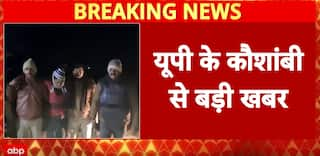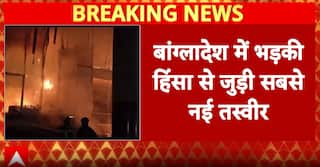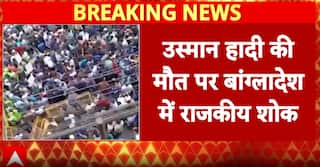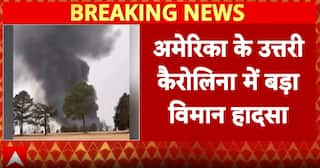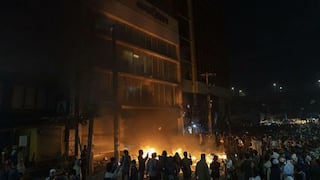Karnataka Election 2023: 10 Reasons Why Exit Poll Results Could Go Wrong

Karnataka Exit poll results are out, and a majority of them, including the ABP-CVoter survey, indicate the Congress will emerge winner or the single largest party close to majority. This effectively means the state is staring at a hung assembly just like the last time. However, since a couple of exit polls also show the BJP ahead, it indicates that the exit polls themselves are divided.
Can Exit Polls Go Wrong?
Why not? Axis-My India, which is giving a clear majority to the Congress this time, had got it wrong in Karnataka in 2018, and so have other agencies in different other states in other elections in the past. With heaps of data and numbers thrown at us by about 9-10 agencies every election season, it’s difficult to decide which one to go by.
Tradiitonally, exit polls had been normally more accurate than opinion polls. Though they were not always correct in their seat projections, they did reveal the trend. However, we are increasingly seeing that exit polls are failing to predict election outcomes and are announcing split verdicts like in Tamil Nadu in 2016, in Bihar in 2015 and 2020, in Uttar Pradesh and Punjab in 2017, in West Bengal in 2021 and in Karnataka in 2018.
What is damaging for the industry is that exit polls have gone wrong even in the case of one-sided elections like in Uttar Pradesh (2017), Bihar (2015), and Delhi (2015).
None of the agencies, except for one, got Gujarat 2017 right, when most people, including the common man, knew who would win.
In a tight contest like in Karnataka, agencies have once failed to live up to the expectations of people, despite incurring huge costs.
ABP-CVoter Karnataka Exit Polls 2023: Full Coverage
Methodology And Challenges For The Exit Poll Industry
The exit polls methodology includes the selection of parliamentary consituencies (PCs), assembly consituencies (ACs), polling booths and voters, using a random sampling method keeping in mind swing seats, low-margin seats, and stronghold seats.
The number of PCs, ACs, polling booths and respondents depends upon the total sample size intended. Surveys are conducted during the voting time when the voter comes out of the station after polling.
Detailed questionnaires are prepared and translated in vernacular languages. The data is then weighed, to take into account age, gender, caste, religion and turnout.
The increase in the number of TV channels has given a fillip to this business. Nowadays, each election sees 10-15 exit polls. While many new players have sprung up, old names such as Hansa Research, VMR and Nielsen have vanished from the scene.
Why Exit Polls Can Go Wrong
1. Exit polls are based on the premise that voters will say the truth during polling interviews. Many may deliberately lie, others (poor/downtrodden) because they may be scared to tell the truth.
2. Exit polls normally come with a health warning that the margin of error is 2%-3%. In the case of Karnataka, this has been the traditional difference between Congress and BJP vote shares.
3. Cost-cutting and a lack of the depth of research could also hamper data collection as channels have tight budgets, and many new players in the market may not have have a solid or demonstrated research methodology.
4. The agences are usually under high pressure to turn around the data by evening. Many polls even have 3 pm as the cut-off time even though voting ends at 6 pm. Many are also adopting phone calls as a methodology, which may not necessarily gauge the true pulse on the ground.
5. Despite technological advancements, there is still a human angle in the cunduct of exit polls, and that's sampling. Often field resources have a tendency to sample convenient booths like urban booths, which often leads to distorted results.
6. People often tend to be politically correct as interviews are done in public places (mostly just outside booths) where confidentiality of information is low.
7. Seat projection by some agencies is done using simple algebra whereas the relationship between vote share and seats is complex, and does not always show a linear relationship.
8. A lot of reliance is placed on historical data, which has its own shortcomings. Changes in turnout, addition of new names to voter list, composition of polling booths, etc, pose many problems.
9. Caste data of no constituency is available, as the last caste census was done in 1934. Economic class-wise data, income levels of voters are also not available, which pose challenges.
10. Women voter sample size in most surveys is 25%-30% against a population of close to 50%. Women outnumber men in 112 of the 224 constituencies in Karnataka, for example. They are voting independently and emerging as important vote because their needs, aspirations and issues are different.
The author is a political commentator and SEBI-registered investment advisor.
[Disclaimer: The opinions, beliefs, and views expressed by the various authors and forum participants on this website are personal and do not reflect the opinions, beliefs, and views of ABP News Network Pvt Ltd.]








